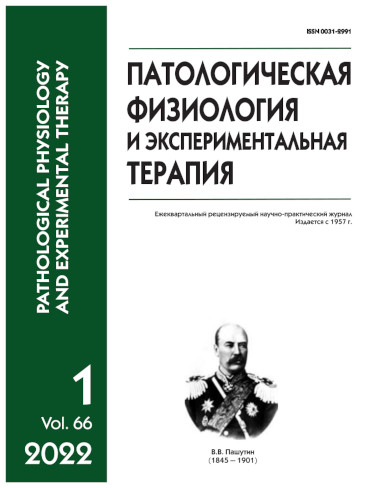Morpho-functional features of astrocytes and microglia in the brain of ageing rat during the course of ethylmethylhydroxypyridine succinate treatment
Abstract
In the development of age-associated neurodegenerative diseases, a key role is played by sustained pro-inflammatory activation of microglia and reactive microglia-mediated oxidative stress, neuroinflammation, and astroglial dysfunction. The constitutive expression of the succinate receptor SUCNR1/GPR91 by microgliocytes, formation of new ideas about succinate as an immunometabolite (metabokine) and the lack of studies of the effect of succinate signaling on the morpho-functional state of CNS resident immune cells stimulated this study. The aim of the study was to assess the morpho-functional features and the number of astro- and microgliocytes in the aging brain of intact rats and during the application of the succinate-containing drug, mexidol (ethylmethylhydroxypyridine succinate). Methods. Experiments were performed on outbred white rats aged 3, 6, and 18 months. Mexidol was administered intraperitoneally at 100 mg/kg/day for 3, 7, and 14 days. The content of highly specific markers of microglial activation (Iba1, ionized calcium-binding adapter molecule 1) and astroglial activation (GFAP, glial fibrillary acidic protein), and the content of synaptophysin (SYP, a marker of synaptogenesis) were determined in cerebral cortex (CC) lysate by Western blot analysis. Immunohistochemical staining of Iba1 and GFAP in paraffin-embedded sections of the prefrontal cortex (PFC) and hippocampus was used to evaluate morphological features and to count astro- and microgliocytes in young and aged rats. Results. In aged rats, the contents of GFAP and Iba1 were increased by 30% and 20%, respectively, and the content of SYP was decreased by 25%, compared with that of young animals. These findings indicate activation of inflammation and a reduction of synaptogenic potential in aged animals. Morphological features of proinflammatory polarization, i.e., short, poorly branched, few processes, were observed for micro- and astroglia in PFC of aged rats. Mexidol caused a decrease of the GFAP and Iba1 content in CC of aged rats, an increase of SYP expression to its level in young animals, an increase in the number, length, branching of processes in GFAP- and Iba1-positive cells. These findings demonstrate succinate/SUCNR1-dependent anti-inflammatory transformation of micro – and astroglia in the aging brain. Conclusion. The findings demonstrate, for the first time, new aspects of mexidol activity and succinate signaling in the brain that limit inflammatory responses and enhance synaptic plasticity. The succinate-containing drug mexidol can be used in the complex therapy of various neurological pathologies associated with neuroinflammation and cognitive deficit.






